Digimon Story: Cyber Sleuth Captures a Different Creature
An experience full of surprises
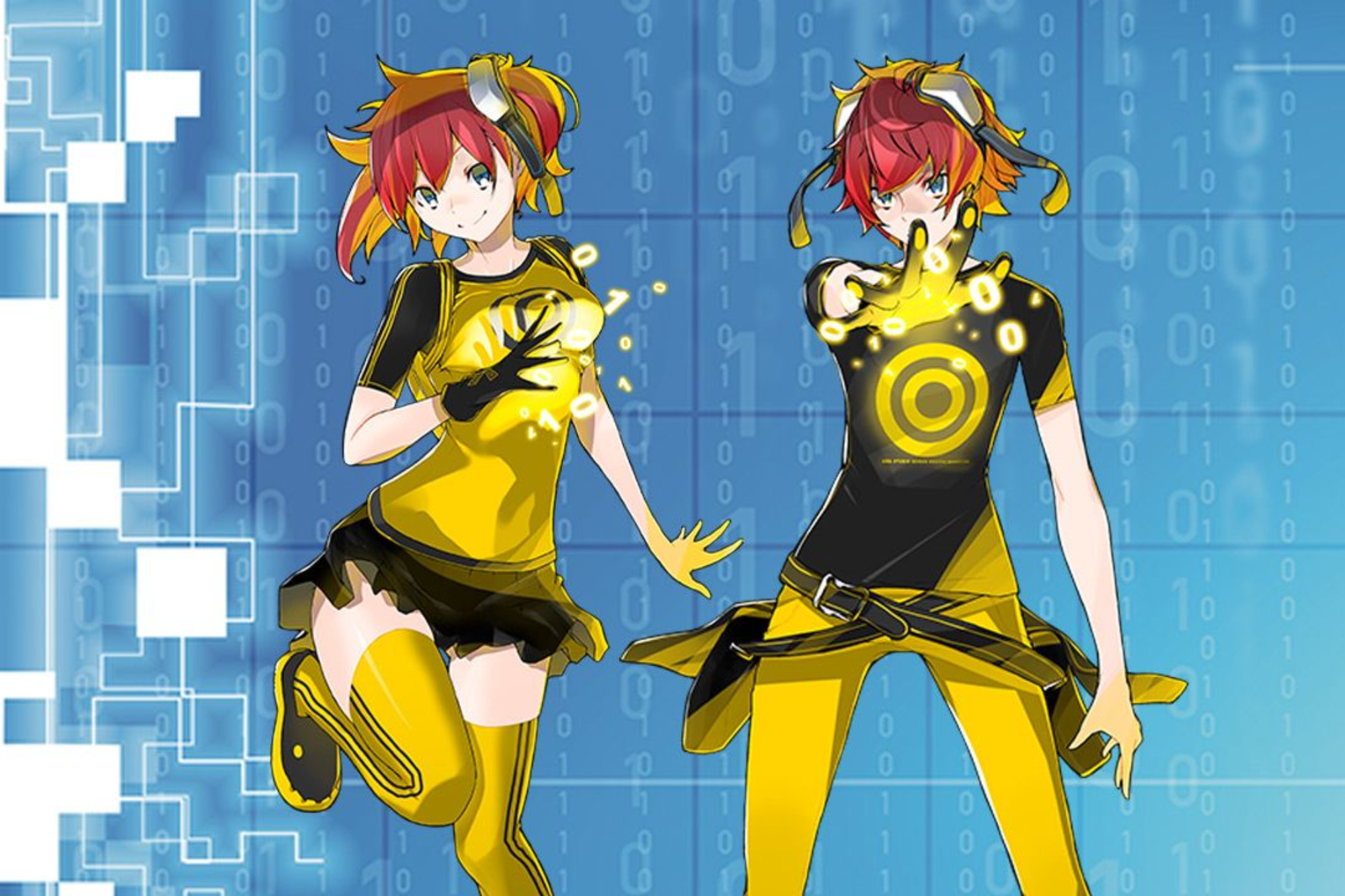
Many people compare Digimon to Pokémon, although that’s unfair to both franchises. The Digimon are, as the name suggests, sentient digital beings that interact with the real world, and that alone takes its stories in other directions. Characters in its worlds have died, confronted traumas, and faced sadistic opponents. Because of this tone, its target audience is usually older than many other shonen franchises.
Digimon Story: Cyber Sleuth continued this tradition of showcasing the various faces of a digital existence.
Keychains that kick-start an adventure
To understand Digimon, we should keep in mind its original starting point. It all dates back to the Tamagotchi, which Bandai first unleashed upon the world in 1996. The simple, small egg device sported a dot-matrix display that gave the player a window to a virtual pet. Neglect meant death for the poor creature.
The next year, Bandai released Digimon, which featured pets that were scarier and capable of virtual combat. The company hoped these aggressive creatures would appeal to boys more than the cute Tamagotchi designs. Digimon World, an original PlayStation title, arrived in Japanese players’ hands in 1999. All of this occurred before the release of the first anime, which shows that much of the franchise’s roots lay in fact in its games.
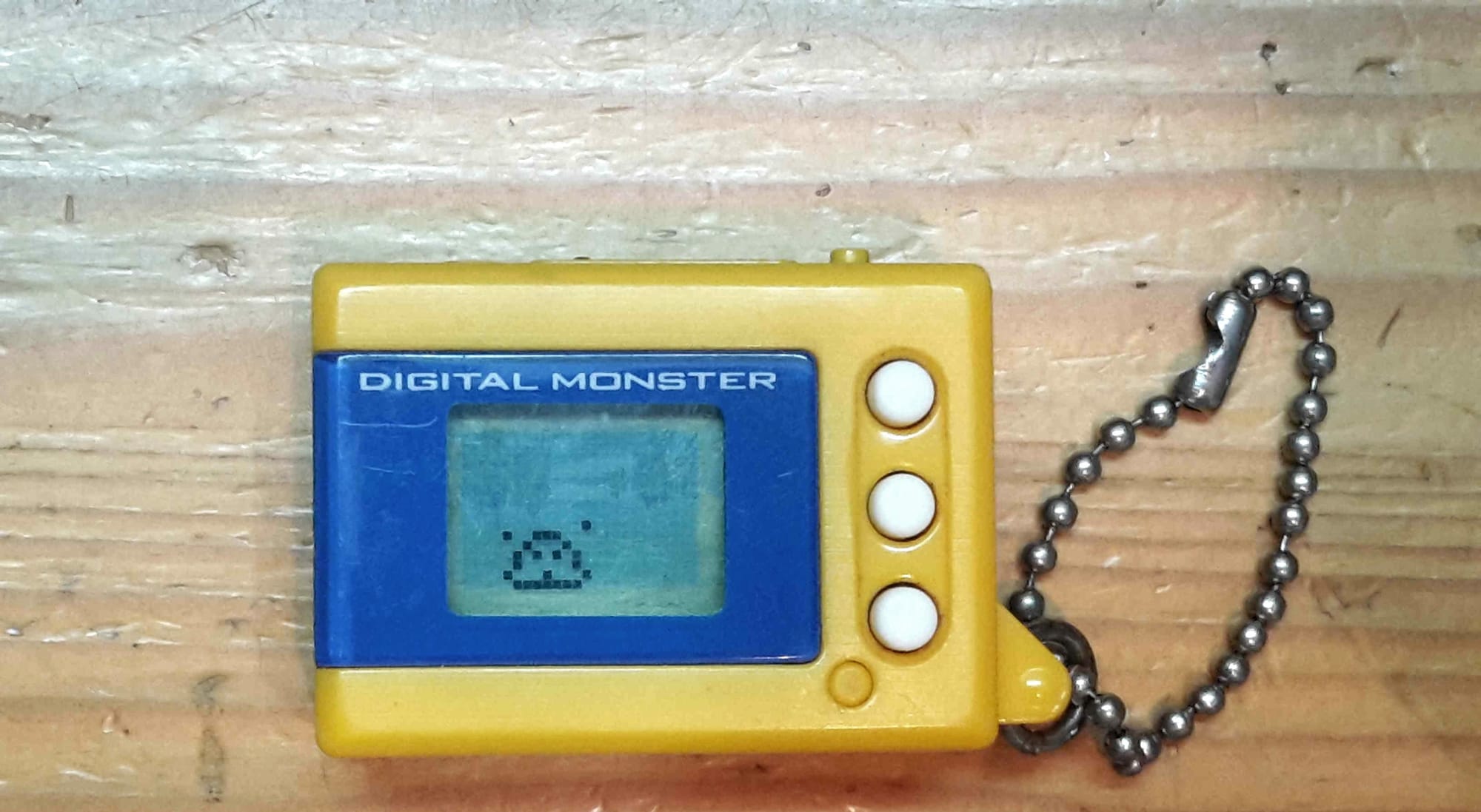
This focus makes sense, though; Digimon are data, like the sprites in a game, so playing it is a meta experience in itself. Ever since the late 1990s, we’ve also been spending an increasing portion of our lives in digital worlds. Its subject seems more prescient than ever.
Collecting a creature or two
I came to Digimon Story: Cyber Sleuth as an old fan of the franchise. My first encounter was when I saw a friend’s Digimon V-Pet back in the 20th century. When they aired in the early 2000s, I watched the first four series of Digimon (Adventure, Adventure 02, Frontier, and Tamer). I also used to collect some of the Digimon trading cards and was lucky enough to get MetalEtemon, one of my favorites, in one pack.
One thing that drew me in was its stories’ darker tone. The DigiDestined – those who are able to access the digital world and bond with Digimon – grow in the face of various hardships, both in the digital world and in their personal lives. The show tries new things in each of its series, such as the fusions of DigiDestined and Digimon in Digimon Frontier, despite the fact that it would have been safer to just tread the same ground.
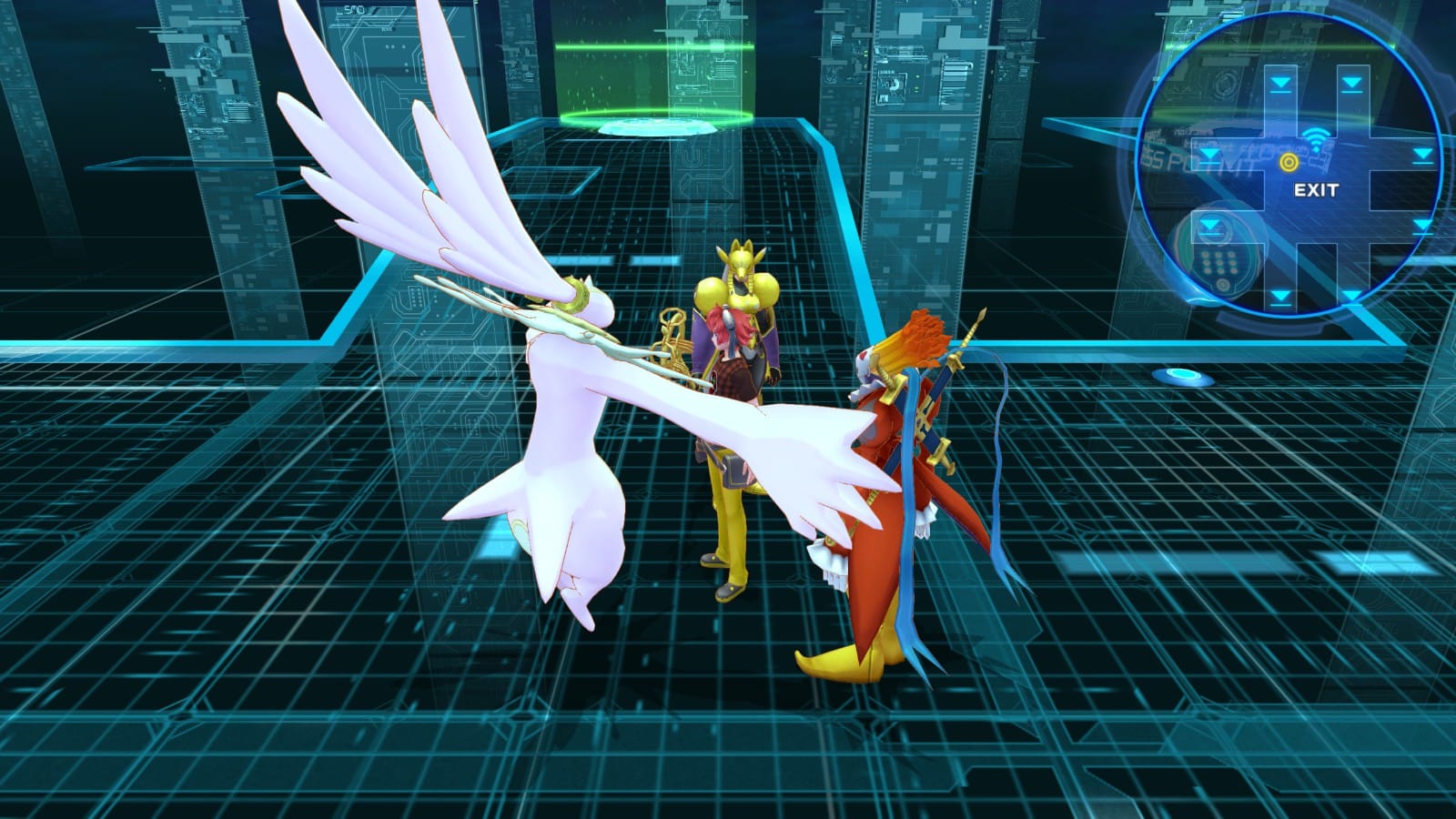
Of course, the designs of the creatures also play an important role. There’s the popular meme that jokes a cat evolves into a lion in Pokémon, whereas in Digimon it changes into a pterodactyl and then into a fridge with a machine gun. That’s the kind of unconventional change you can expect in this world. The designs do match their environment though, because anything is possible on the internet and the normal rules fall by the wayside.
Digimon Story: Cyber Sleuth, released in 2015, recognizes that the creatures are one of the franchise’s strong points. In the complete edition, there are over 300 Digimon available, and it’s a good mix of familiar faces and others that deserve more of a spotlight. I became nostalgic when I finally encountered my favorites: Sakuyamon, Etemon, Kerpymon, Piedmon, and more.
Splashes of colour
The battle animations during combat, especially of “big” attacks, are often quite easy on the eye. It’s an aspect that heightens the drama of each encounter. Your battle team can also consist of up to 3 active Digimon, like many Persona and Final Fantasy titles. Thankfully, there’s also an option to shorten the battle animations, because they might test your patience when you’re grinding to reach higher levels.
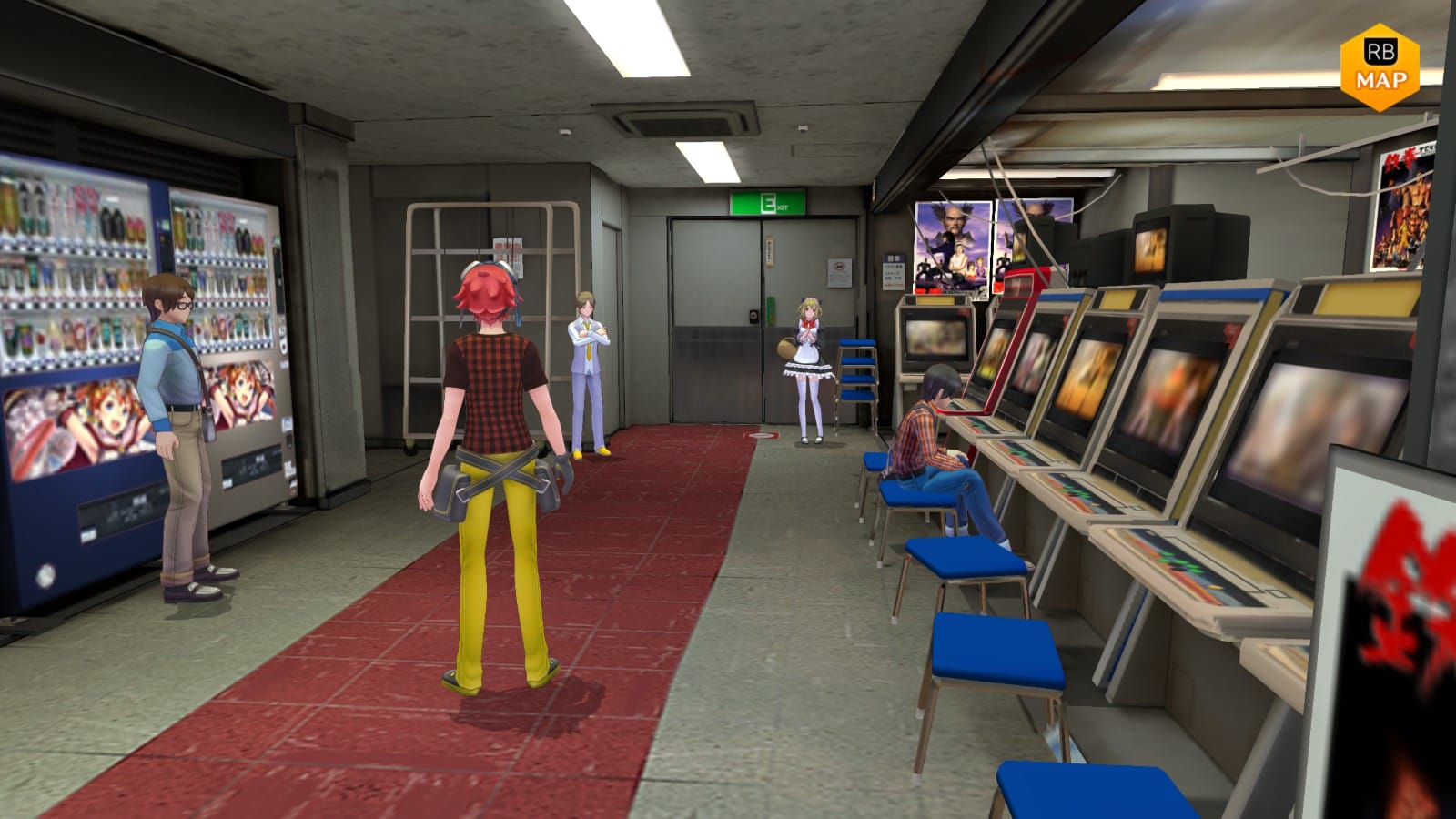
Oh, and how you’ll grind.
After some steady progression in the Champion stage, you’ll feel you’ve hit a wall, but there are strategies that can overcome it. The Offline Coliseum is one such source of easy experience. Located on the 4th floor of Nakano Broadway, near the arcade machines, it allows one to fight in a tournament against formidable PC opponents. When you win the cup, you advance to the next level, so it’s better to purposely lose after four battles, so you have the option to come back and farm experience later.
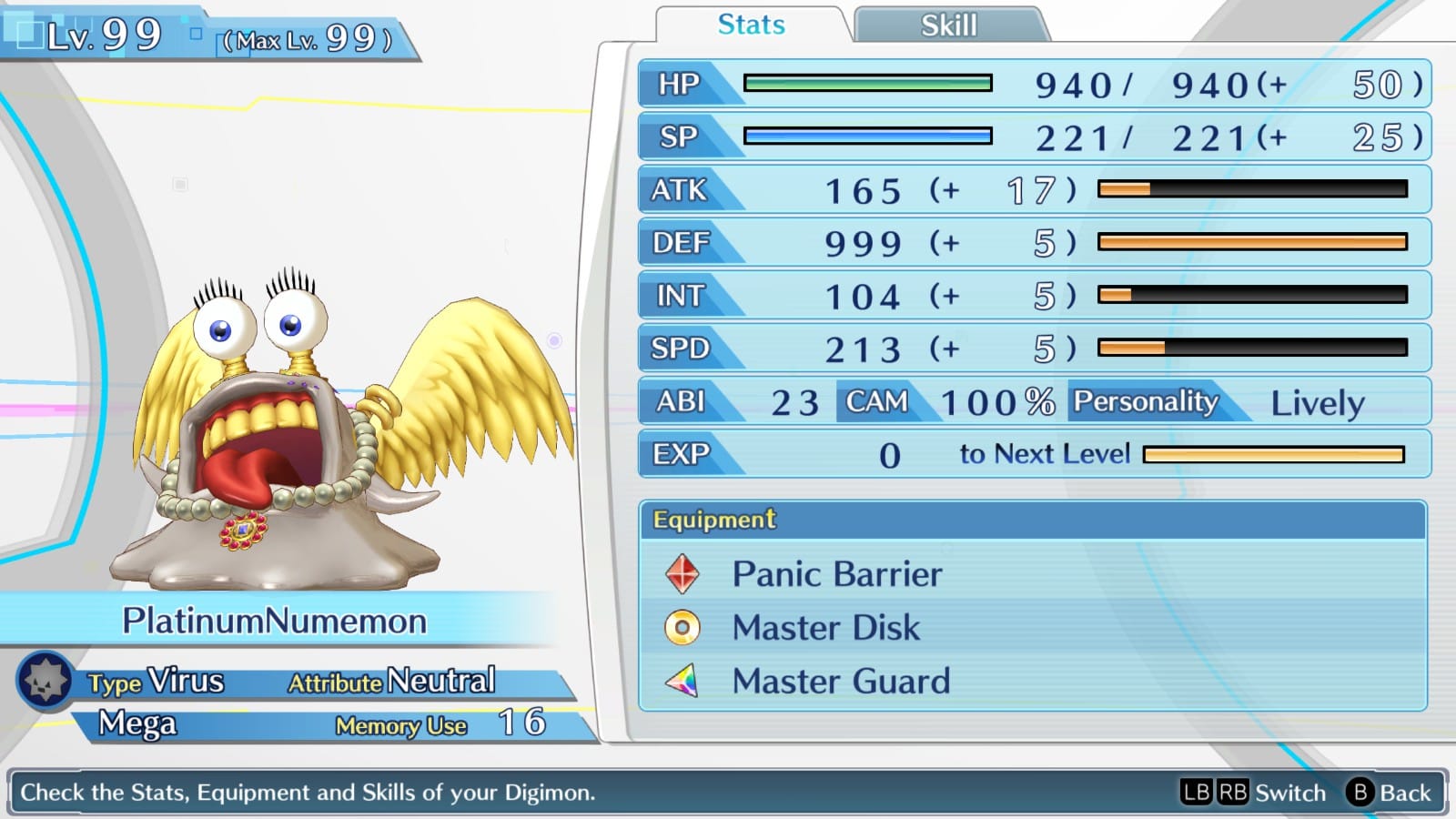
Two Digimon, PlatinumSukamon and PlatinumNumemon, also have passive effects that boost the experience one receives from a battle. They stack too, so having two in your party increases the experience gains even further. You can also equip several Tactician USBs, which are items that also boost experience gains after a battle, to one of these Digimon to stack more bonuses.
If one were unaware of these mechanics, then the game might seem an unbearable slog. Digimon Story: Cyber Sleuth is a game of interlinked systems, though. To get Tactician USBs — quite a rare item in the game — you can develop your farm, a research facility you fill with Digimon with the suited personality: the Builder personality. It’s a multi-step process with its own challenges, but you also gain a sense of accomplishment when your whole setup has grown into a formidable team.
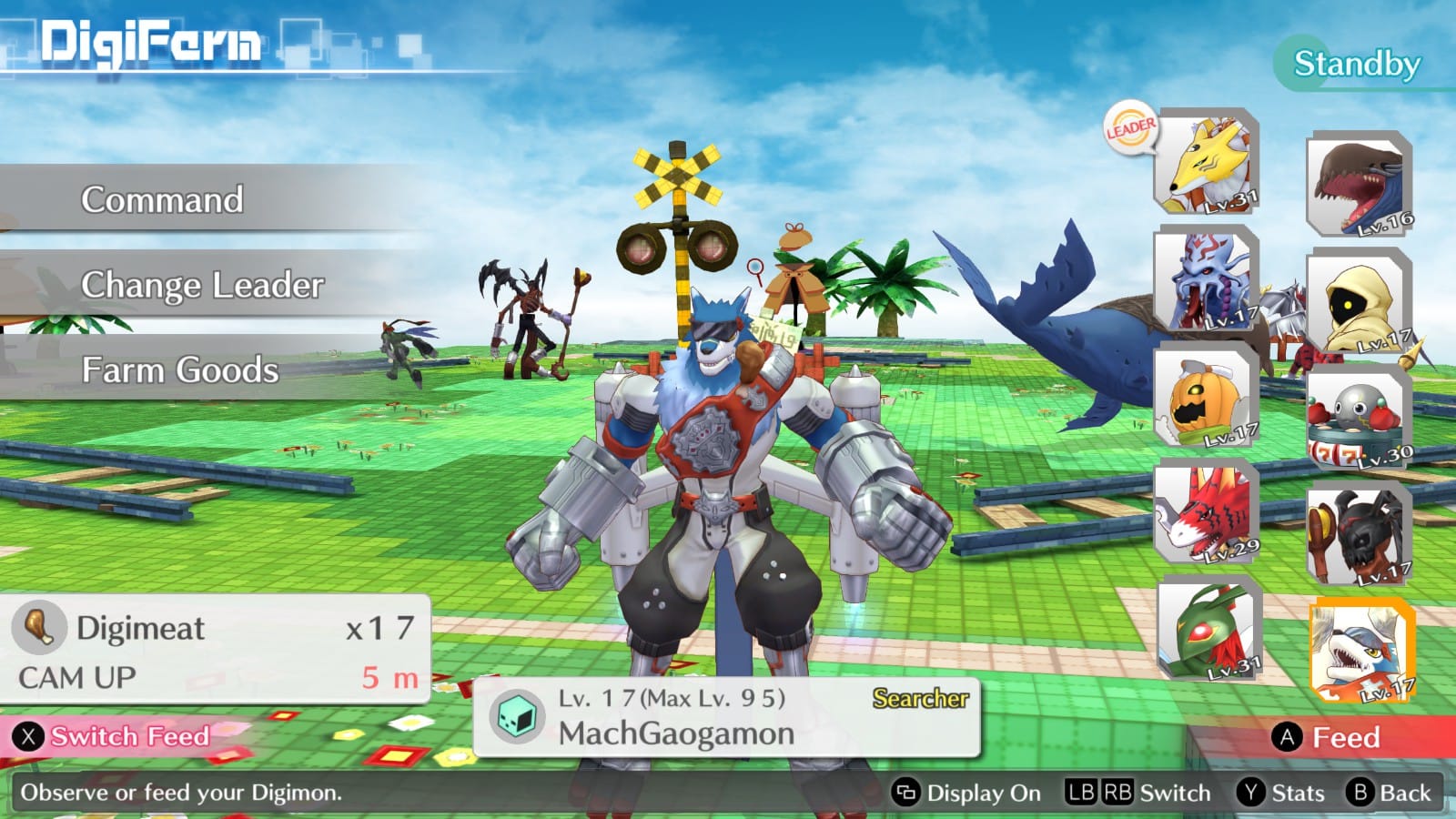
Climbing into the driver’s seat
One aspect I struggled to get into was the story. At the start, you sit through a long-winded section that is pretty vague, contextually speaking. It takes quite a while before the game hands you the reins, and it doesn’t take this time to explain many of its systems. It trusts you to consult the tutorial in the Digivice on your own time.
Once they appear on the scene, the characters aren’t very endearing or multidimensional, either. One's obsessed with romantic relationships, another is always sullen, another is obsessed with coffee, and so on. They are, sadly, often defined by one or two quirks.
Prominent female characters are also often sexualized to a significant degree. It’s not uncommon to see a prominent décolletage or a bizarre cutaway dress front and center. Sometimes, they also find themselves in situations that cater to the male gaze. Of course, those elements are also present in many Digimon designs, but there are also creatures that cater to the female gaze, so in that aspect, it isn’t so one-sided. This isn't the case in the designs of its human characters.
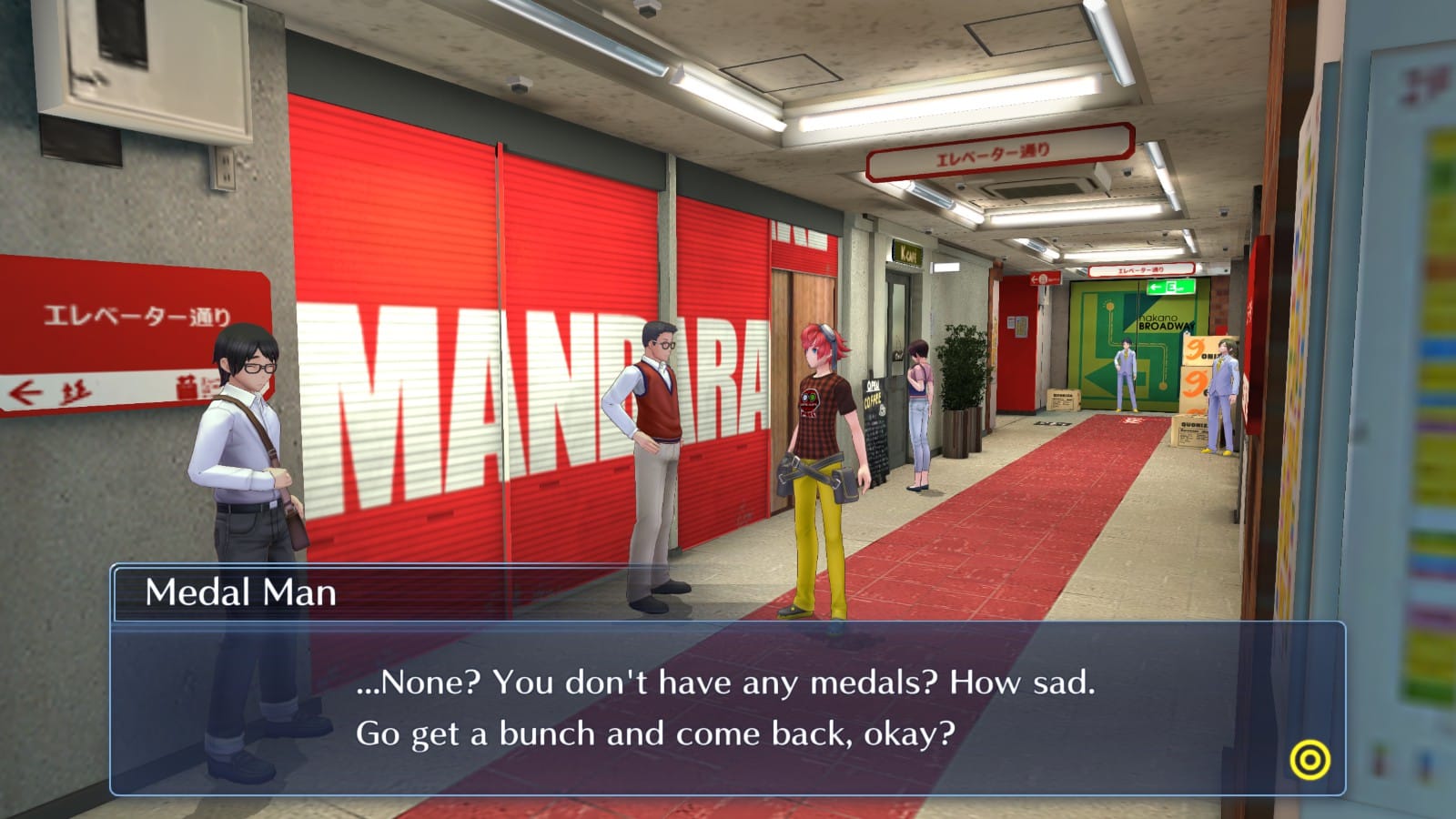
To make matters worse, it’s difficult to form an emotional connection with any of the characters when the story jumps all around during its initial phases. The main narrative only becomes intriguing in the second half, which in a game this size is dozens of hours deep into the arc. Some of the side quests were actually much more interesting to me than the main storyline. One factor that made me return to it, as perhaps is the case for many other gamers, is the Digimon themselves.
A route with many diverging paths
It’s fun to raise a Digimon in Cyber Sleuth. Unlike many other creature collectors, growth isn’t linear in the game, because you can (and often must) de-digivolve a creature to a lower stage and then digivolve it again to meet the conditions of a digivolution. The charts of these digivolution routes often looks like an obsessed detective’s corkboard, too.
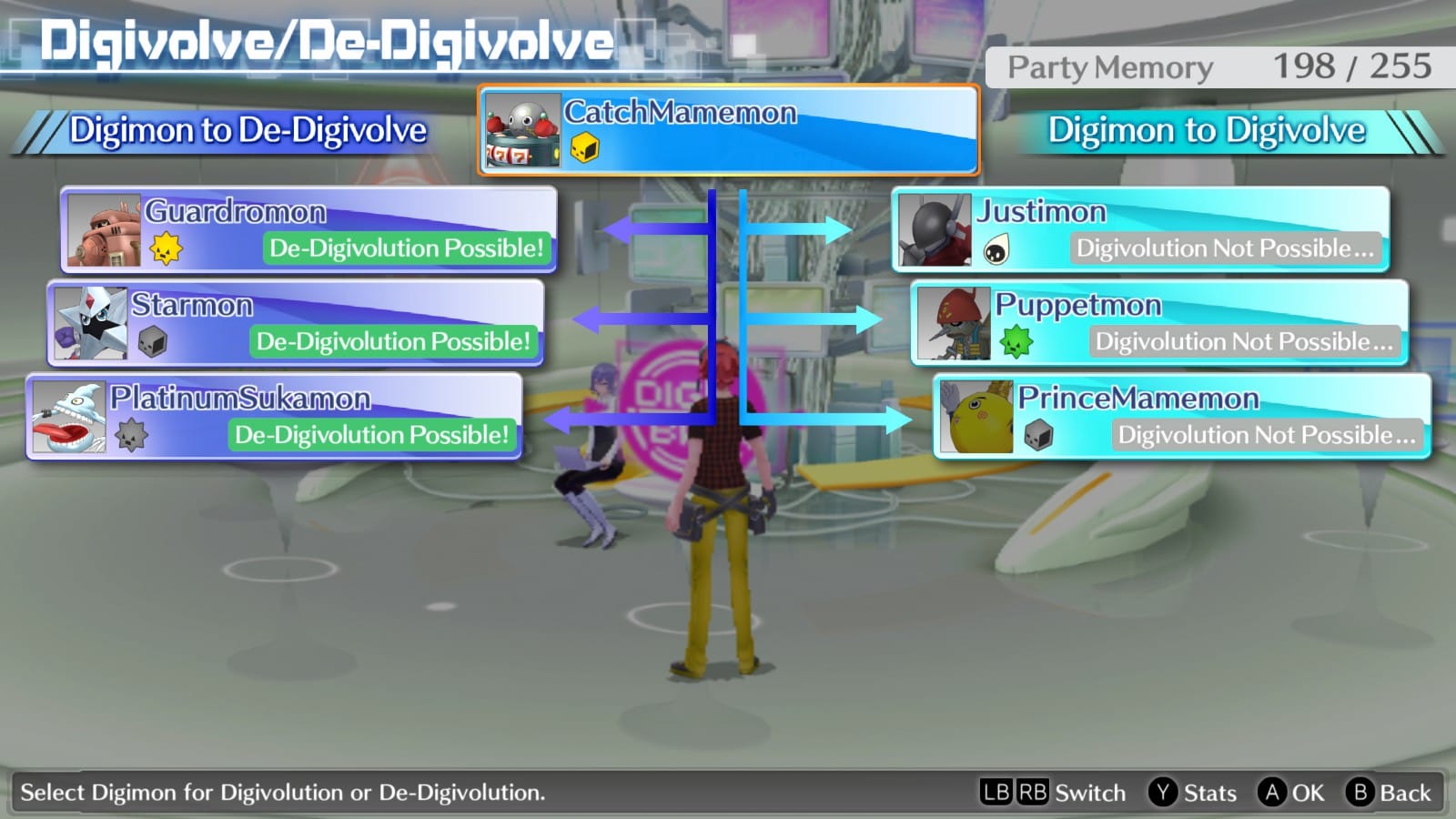
This going-backward-to-move-forward style of progression can be disheartening if you haven’t identified clear routes to an easier experience. To make the most of it requires careful planning and a change of thinking. The backward steps are part of the exploration process.
Once everything clicks, the gameplay loop becomes a pleasant routine. You check your inbox for funny messages from characters, visit the Digi Lab to convert data into Digimon and see new evolutions, and then head to the farms to tweak what you need for your intended results. This means it’s easy to get side-tracked by many of these elements, but it also makes the game feel larger than its dungeons.
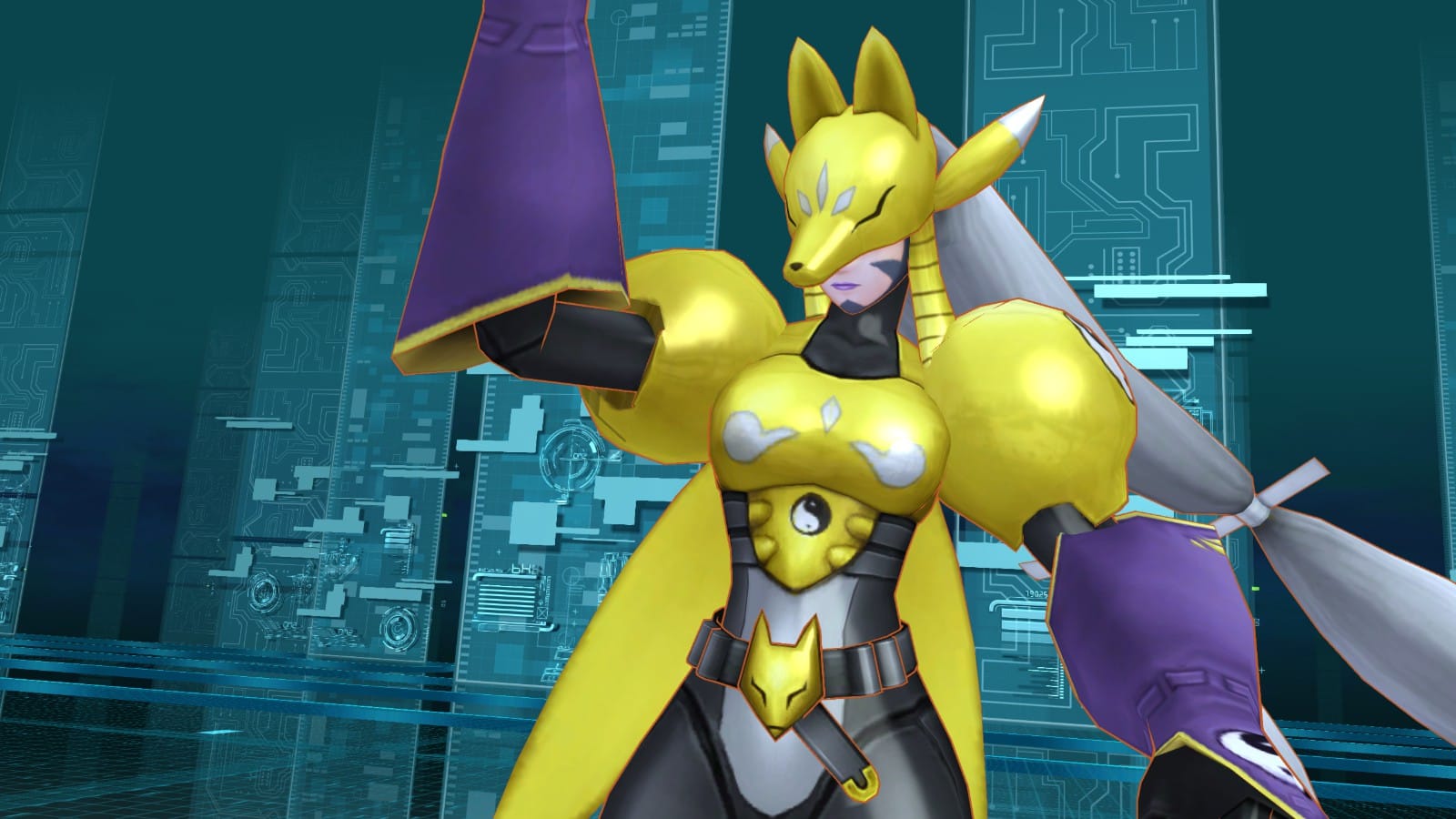
Those dungeons can be quite difficult to navigate. The locations of mission objectives aren’t always clear, either. In these cases, the High Security hacking skill, which reduces or eliminates encounters, makes it a less time-consuming endeavor. It’s another instance where the game contains the system, you just have to dig through the layers to find it.
My total playtime on the PC version amounted to around 70 hours (that’s excluding Hacker's Memory, which I haven’t touched yet), so it’s not lacking in the content department. Though, your enjoyment of Digimon Story: Cyber Sleuth will depend pivotally on your love of Digimon. If you adore those odd digital critters, then you might have the patience to look past the game's faults and enjoy the various intricate systems and challenges it has to offer.